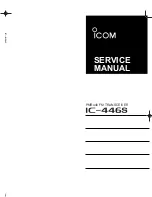
MDS 05-4846A01, Rev. H
SD Series Technical Manual
59
IP Payload is intended to be used in a poll-response system. An Ethernet
device at the Master radio sends UDP/TCP poll messages to the
Master’s Ethernet port which is configured to listen for data. The poll is
sent OTA and a RTU/PLC attached to one of the Remote radios (via
serial or Ethernet) responds. The response is sent OTA back to the
Master radio. The Master radio then sends the response back to the
polling station via Ethernet.
When configuring this feature, you are notified of the success or failure
of the operation. Additionally, Ethernet and OTA statistics can be mon-
itored to inspect the success of the poll-response communication.
The following additional points apply to Ethernet payload operation:
• To make efficient use of limited bandwidth, this feature trans-
ports the
payload content
of Ethernet data to be sent over the air.
• This feature does
not
bridge Ethernet networks separated by
radios. For more information, see Ethernet Bridging
found
on
Page 55 in the Bridge Configuration section.
• A
broadcast
poll-response network is assumed, where addressing
information is contained in the payload portion of the UDP/TCP
messages.
NOTE:
Screen selections vary depending on the mode selected. Three
such screens are provided for Payload 1, 2, and 3.
•
Status
—Enables or disables the IP Payload port.
•
Mode
—The operating mode for the IP port may be set to
UDP
Socket
,
TCP Client Socket
,
TCP Server Socket
, or
TCP Server/Client Socket
to
match the service in which it will operate.
•
Talk on/Listen to
—Any combination of the three Virtual Radio
Channels may be entered in these fields. For more information on
how VRC settings are used, refer to the
SD Serial/Telnet Manage-
ment Supplement
, Part No. 05-6193A01.
•
Local Radio IP Port
—Used to specify a port number for the RJ-45
modular connector on the radio’s front panel. As a general rule,
port numbers below 2000 should be avoided, as some are
reserved for special applications in data networks.
















































